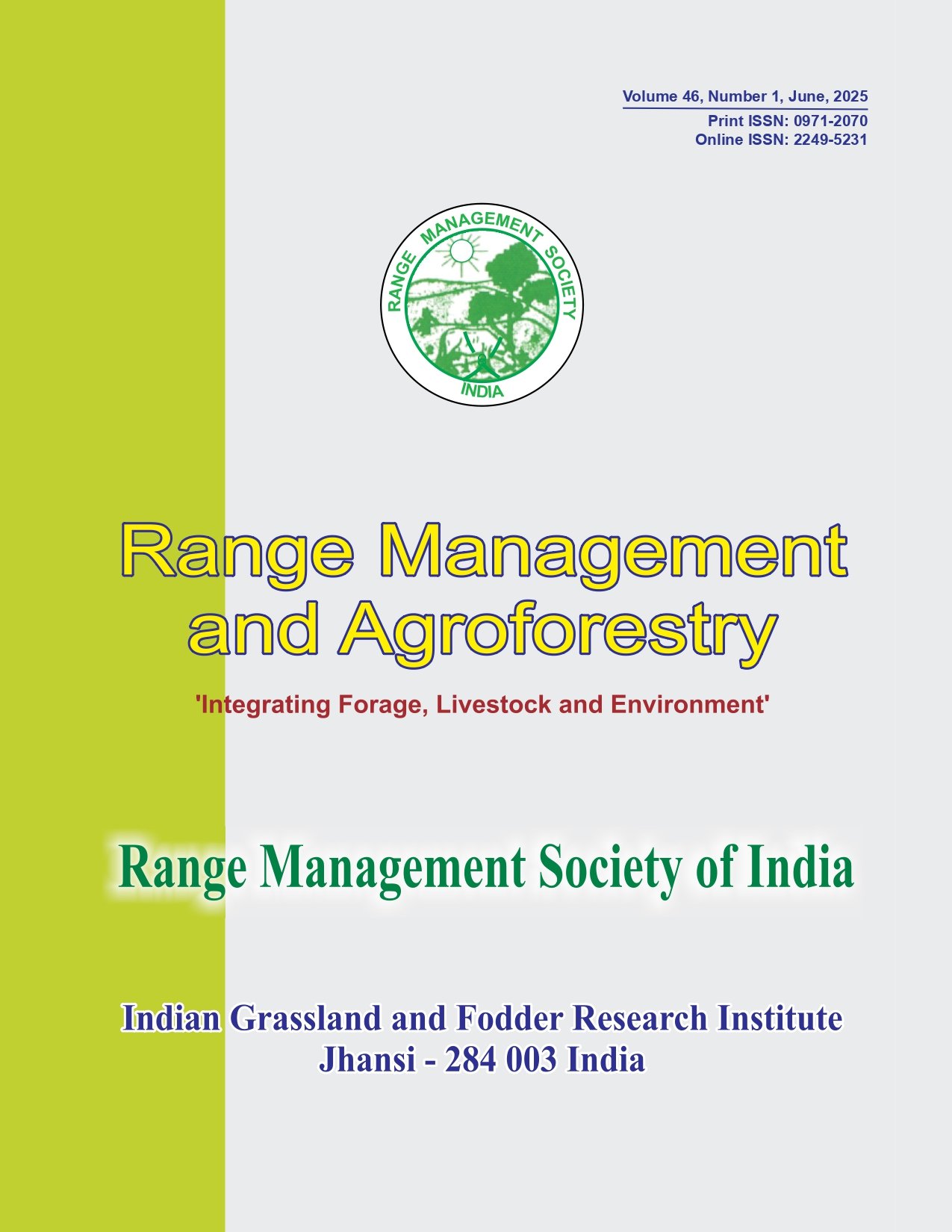Effects of community camel and sheep grazing on vegetation cover in Al- Mayla rangeland in northern Saudi Arabia
Keywords:
Camel, Community, Grazing, Saudi Arabia, Sheep, Vegetation coverAbstract
The present study was conducted to investigate the effects of community camel and sheep grazing on vegetation cover and production at Al-Mayla rangeland enclosure in Arar, northern Saudi Arabia, protected for 40 years. Following a first vegetation sampling conducted in August 2022, two different sites (Artemisia and Atriplex sites) were identified and management plan involving grazing for one month on the Artemisia site by 769 heads of camels and the Atriplex site by 2739 heads of sheep was proposed. Upon pressure from the pastoral community, the number of sheep was increased to 7500 head and the grazing period was reduced to 2 weeks in September 2022. Field data collection was conducted after grazing. Total plant cover and soil surface states, species cover and density, and biomass available for grazing were measured and compared to the situation before introducing animals. Results showed that long-term protection (40 years) had a negative effect on vegetation cover dynamics through the development of more competitive and stress-tolerant low-range value species and hard soil crust which reduces infiltration, emergence of seedlings, and growth of plants. The findings suggested that short-period grazing with a high stocking density of mixed herds of camel and sheep which reduced animal selectivity and improved soil structure is not harmful to vegetation cover and range production and had social implications by allowing the grazing of more herds from the community




